This is our review of the best Wi-Fi boosters in 2024.
Earlier this year, we bought nearly 20 Wi-Fi extenders to test and determine which is the best. And we’d like to share our findings with you.
After thorough testing, we found that the TP-Link RE605X AX1800 is the best overall Wi-Fi extender. Because it’s fast, easy to set up, and affordable.
Editor’s Choice – TP-Link RE605X
Best Overall
- Coverage: ≈ 60 feet
- Max speed (Wi-Fi): 346.35 Mbps
- Separate networks: Yes (not with TP-Link routers)
- Recommended for: 1,000 Mbps plans or higher
- Wireless standard: Wi-Fi 6 AX1800
- Warranty: 3 years
But, not everyone’s home nor Internet plan is the same. So, a different Wi-Fi extender could be better for you.
As such, we put together this list of the top 9 Wi-Fi extenders so you can choose the one that’s best for your home and Internet plan.
To learn about the top nine Wi-Fi extenders, continue reading.
Top 9 Wi-Fi Extenders in 2024
- Best Overall – TP-Link RE605X AX1800
- Best for Mid-Tier Speeds – Netgear EX7300 AC2200
- Best Range– TP-Link RE650 AC2600
- Runner Up – Netgear EAX20 AX1800
- Best Value – Linksys RE7000 AC1900
- Best For Gaming – Netgear EAX80 AX6000
- Best With Ethernet – Netgear X6S EX8000 AC3000
- Best for Basic Internet Plans –TP-Link RE315 AC1200
- Best Budget Option – TP-Link RE220 AC750
9 Best Wi-Fi Extenders in 2024
Here are our brief reviews of the top Wi-Fi boosters/repeaters.
#1 TP-Link RE605X AX1800 – Editor’s Choice
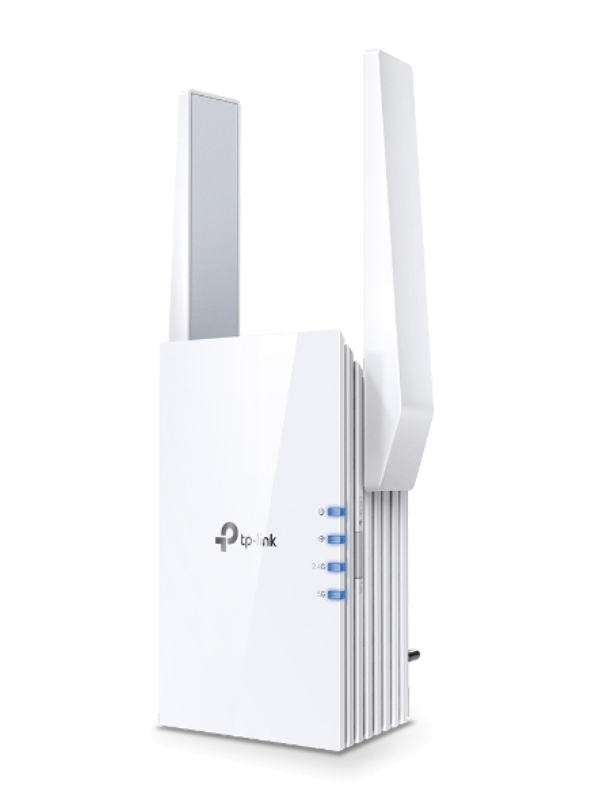
- Coverage: ≈ 60 feet
- Max speed (Wi-Fi): 346.35 Mbps
- Separate networks: Yes (not with TP-Link routers)
- Recommended for: 1,000 Mbps plans or higher
- Wireless standard: Wi-Fi 6 AX1800
- Warranty: 3 years
Pros
- Fast speeds
- 3-year warranty
- Quick and easy setup
Cons
- Separate networks
The TP-Link RE605X AX1800 is the best Wi-Fi booster for Internet plans of any speed.
It works best with fast Internet plans (1,000 Mbps or faster), but it will work well for slower plans too.
The installation of the TP-Link booster was a breeze. Simply connect to the Wi-Fi network and follow the Tether app’s step-by-step directions. Removing it from the packaging took longer than installing it (less than 60 seconds).
Although, this was far from our first time using an extender (we’ve set up too many to count). It is, however, very easy to do.
We were astonished by the TP-Link RE650X’s Wi-Fi range, which was 60 feet. Which is more than any other model we reviewed.
It also extended our range by an additional 10 feet on Ethernet, bringing it to 70 feet total.
This is such a wide range that it might cover your detached garage as well as some of your neighbors’ houses.
During our testing, it reached a speed of 674.53 Mbps on Ethernet at 5 feet. On Wi-Fi, it achieved 346.35 Mbps at 5 feet, 268.04 Mbps at 15 feet, and 257.04 Mbps from 25 feet, all using the 5 GHz band.
Are these download speeds good? Yes– a quick reference: you can stream up to ten 4k films at the same time with 350 Mbps!
This means you can download almost anything in a few minutes.
We will note that we tested this extender with a good quality router, the ASUS RT-AX88U. If you’re using an out-of-date or slow router.
The primary drawback of the RE605X AX1800 is that it creates a second network if you don’t have a TP-Link router with OneMesh (unless you connect with Ethernet). As a result, you’ll need to switch networks when moving throughout your home with your smartphone or laptop.
Consider connecting your extender to your router with Ethernet rather than Wi-Fi if you do not want to deal with numerous networks.
The TP-Link RE605X AX1800 is a fantastic choice for getting Wi-Fi to your entire home. It has excellent range, rapid transmission rates, and a simple setup, making it an exceptional value.
The RE605X’s one disadvantage is that it has a secondary network with routers that don’t support OneMesh (unless you connect it to Ethernet).
Read our full review of the TP-Link RE605X AX1800.
#2 Netgear EX7300 AC2200- Best for Mid-Tier Internet Plans
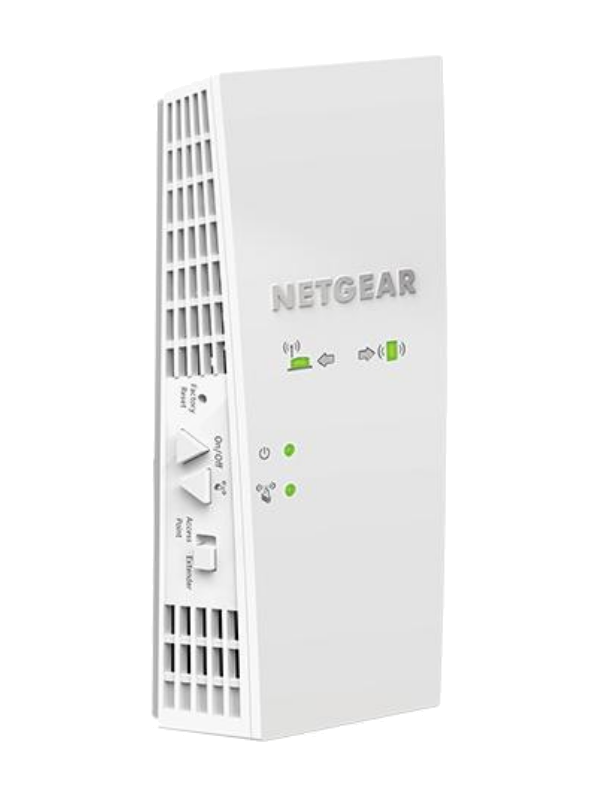
- Coverage: 60 feet
- Max speed (Wi-Fi): 324.58 Mbps
- Separate networks: Yes
- Recommended for: 500 Mbps plans or slower
- Wireless standard: Wi-Fi 5
- Warranty: 1-year
Pros
- Low-cost
- Good range
Cons
- Setup hiccups
The Netgear EX7300 is a decent all-around choice if you have a slower internet plan (500 Mbps or less).
During our tests, from 5 feet, it achieved 324.58 Mbps with the 5 GHz band and 239.65 Mbps from 15 feet, while 254.25 Mbps was recorded at 25 feet with the same band.
Yes, we were surprised that that speed increased at 25 feet from 15 feet too.
Connecting it to a router with Ethernet boosted performance by more than two times, reaching 651.58 Mbps.
With that speed, you can download all 101 GB of Call of Duty: Infinite Warfare in a mere 22 minutes and 11 seconds. In our opinion, that is very fast.
We’ll reiterate that we tested these extenders with a Gigabit internet plan and a powerful router (ASUS RT-AX88U). Remember, the speed of the extender will be determined by your current internet package and your router.
Its range was reasonable, about average for the Wi-Fi boosters we tested, reaching around 60 feet. Its distance is sufficient to cover the majority of typical homes with Wi-Fi.
The EX7300 also includes built-in mesh capabilities, which means it can connect to your existing network without making a secondary network.
This means you won’t have to shift between networks when traveling around the house with a gaming laptop, smartphone, and iPad.
The EX7300’s setup was reasonable. However, we had some difficulty connecting to the router. After a hard reset of the extender, however, everything worked perfectly.
The Netgear EX7300 is an excellent all-around extender with decent performance and range for slow to medium internet plans. It also includes combined networks and a simple installation.
Read our full review of the Netgear EX7300.
#3 TP-Link RE650 AC2600 – Best Range
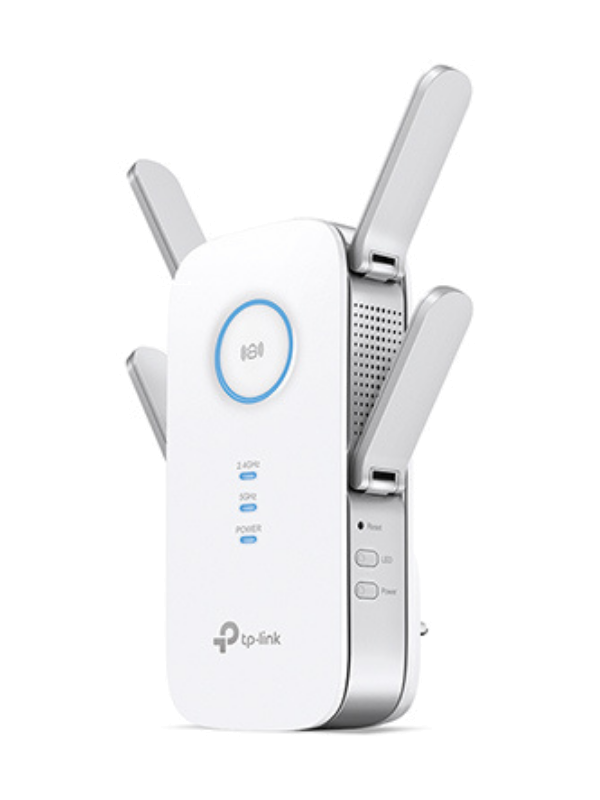
- Coverage: ~70 feet
- Max speed (Wi-Fi): 332.58 Mbps
- Separate networks: Yes (not with TP-Link routers)
- Recommended for: 1,000 Mbps plans or slower
- Wireless standard: Wi-Fi 5 AC2600
- Warranty: 3 years
Pros
- Fast speed
- 3-year warranty
- Great range
Cons
- Creates a secondary network
The TP-Link RE650 AC2600 is the most powerful Wi-Fi extender on the market. It has a fantastic range, fast speeds, and a user-friendly setup, making it an outstanding choice for people looking to expand their home network a long distance (like outdoors or to a detached garage).
It has the best range out of all the extenders we tested. It achieved:
- 70 feet on Wi-Fi
- 80 feet on Ethernet
This is a fantastic range, the best of the extenders we tested and enough to cover your entire house, backyard, and more.
If you use a non-TP-Link router brand, it will make a second network (unless you connect via Ethernet). But, if you have a TP-Link router, you have good news! You can use OneMesh and have a single network (note: not all TP-Link routers have OneMesh).
Secondary networks are problematic because you have to change networks on your mobile devices when you move around your home.
The setup procedure is straightforward, taking only a few minutes. To complete the installation, you just have to use the Tether app on your smartphone or tablet.
Besides its easy setup, the RE650 is speedy too.
At five feet on the 5 GHz band, it achieved incredible speeds of:
- 332.58 Mbps on Wi-Fi
- 657.23 Mbps on Ethernet
That’s enough speed to download colossal video game files (100+ Gb) in a few hours while streaming multiple 4k videos.
The TP-Link RE605 AC2600 is a wonderful Wi-Fi extender that works well with high-speed plans of 1,000 Mbps and lower. It has superb coverage, quick speeds, and a simple installation process.
The only negative aspect of this extender is that it makes a second network (unless you utilize OneMesh or Ethernet).
Read our full review of the TP-Link RE650 AC2600.
#4 Netgear EAX20 AX1800 – Runner Up
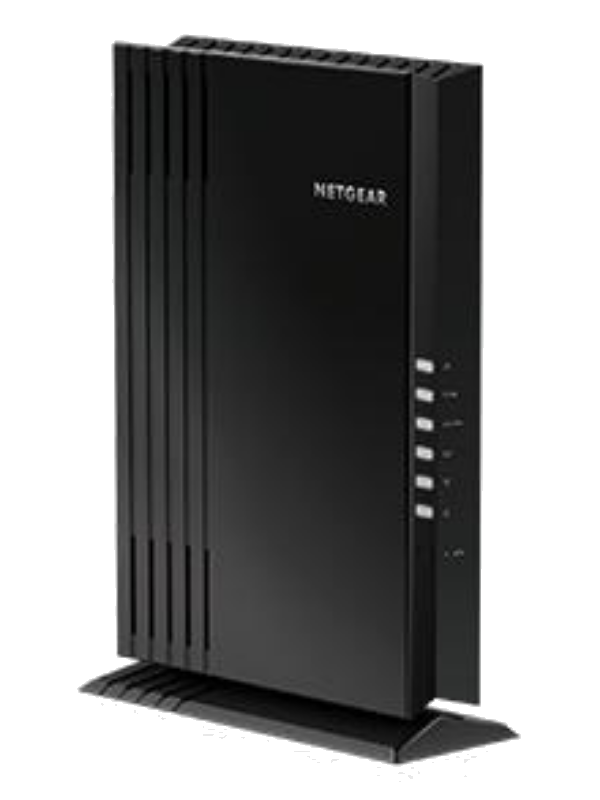
- Coverage: 50 feet
- Max speed (Wi-Fi): 398.67 Mbps
- Separate networks: No
- Recommended for: Internet plans 1,000 or less
- Wireless standard: Wi-Fi 6
- Warranty: 1-year
Pros
- Fast speed
- Great value
- Combined networks
Cons
- Complex set up
The Netgear EAX20 AX1800 is an excellent all-around choice. It isn’t the most powerful extender on this list, but it provides a suitable balance of performance to price.
The EAX20’s Wi-Fi and Ethernet ranges are about the average of the extenders we tested, at 50 and 60 feet, respectively.
It is, however, enough to cover every corner in the majority of households.
In our speed test, it proved to be a competent performer, but not exceptional. At 5 feet, it delivered a speed of 398.67 Mbps, 276.69 Mbps at 15 feet, and 236.7 Mbps at 25 feet. Not the fastest, but still quick enough for most average internet users.
It is fast enough to stream multiple 4k films at the same time.
When we connected Ethernet, the speed increased to 609.81 Mbps, which is a nice improvement. However, it wasn’t as significant an improvement as some of the other tested models.
However, it is still quite fast for most homes.
The EAX20 set-up proved to be more complicated than we had anticipated. The device claimed that the network password was incorrect (even though it wasn’t– we swear). We had to move the router closer for it to connect (and now the password is good again suddenly).
The Netgear EAX20 AX1800 is still a solid option for most homes with average internet speeds.
It is a great choice, despite some limitations and initial setup difficulties. Connect the extender to your router using Ethernet if you want faster speeds.
Read our full review of the Netgear EAX20 AX1800.
#5 Linksys RE7000 AC1900 – Best Value
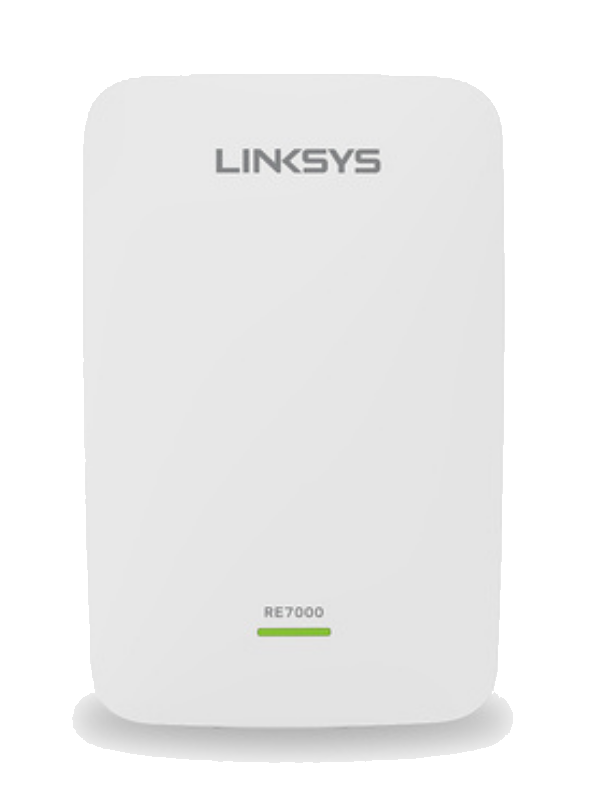
- Coverage: 60 feet
- Max speed (Wi-Fi): 320.83 Mbps
- Separate networks: Yes
- Recommended for: Internet plans slower than 1,000 Mbps
- Wireless standard: Wi-Fi 5
- Warranty: 1-year
Pros
- Budget-friendly
- Great range
- Decent speeds
Cons
- Creates a second network
- Lengthy setup
Our top pick for the best value Wi-Fi extender is the Linksys RE7000 AC1900.
The RE7000 increased our Wi-Fi range by an additional 60 feet. It extended it to 70 feet on Ethernet and delivered speeds of up to 320.83 Mbps at 5 ft on the 5 GHz band.
An extra Wi-Fi bubble of 60 to 70 feet, for example, can bring internet to the entire floorplan of large, multi-story homes and even to your detached garage, backyard, or pool.
The speed jumped to an impressive 519.73 Mbps when using Ethernet at a distance of 5 feet, which is excellent considering the RE7000’s cost.
Sure, it is slower than some of the other extenders on this list, but they’re fine for most families.
You’ll be able to watch 4K videos, conduct a video conference, and download huge files simultaneously without any issues or lag.
The Linksys RE7000 comes with an Ethernet connection, so it may be connected straight to your gaming console, PC, or laptop computer for a better internet connection. This will provide you with the fastest speeds possible.
The Linksys app (but you may use the web interface as well) makes it simple to set up. The mobile app takes you through each stage, theoretically making installation easier.
But, because of the lengthy load times, setting up took us around 10 minutes. This is considerably longer than the few minutes it took us with prior extenders.
The RE7000 also makes a new second network. If you only want one network in your home and don’t want to deal with changing networks when you go from room to room (even if you connect to the router with Ethernet).
If you simply want to boost your Wi-Fi signal, this is an excellent option.
Overall, the Linksys RE7000 AC1900 Wi-Fi extender is a fantastic value option because it’s one of the more affordable Wi-Fi extenders yet offers decent speeds and range (which is a longer than average setup).
Read our full review of the Linksys RE7000 AC1900.
#6 Netgear EAX80 AX6000 – Best For Gaming
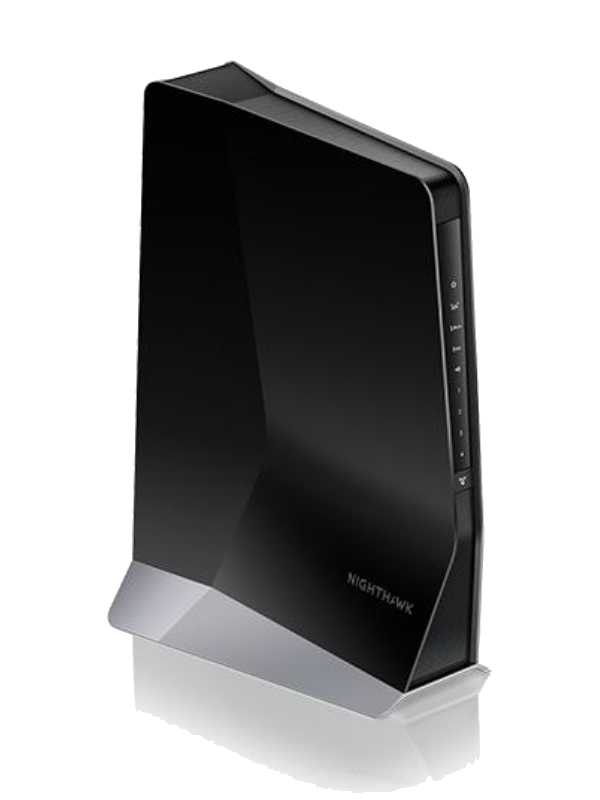
- Coverage: ≈ 65 feet
- Max speed (Wi-Fi): 437.34 Mbps
- Separate networks: No
- Recommended for: 1,000 Mbps plans or faster
- Wireless standard: Wi-Fi 6 AX6000
- Warranty: 1-year
Pros
- Fantastic range
- Single network
- Fast
- 4 Ethernet ports
Cons
- Some problems setting up
- More expensive than other options
The Netgear EAX80 is our top-performing Wi-Fi extender for online gaming since it increases the Wi-Fi range substantially, is ultra-quick, and works on a single network.
The EAX80’s Wi-Fi and Ethernet ranges were 65 feet and 75 feet, respectively, in our tests.
This is an ample distance to cover all of the rooms in large houses, providing enough signal strength to reach your gaming room no matter where it is.
At five feet on the 5 GHz band, the EAX80 extender achieved download speeds of 436.34 Mbps on Wi-Fi and 811.59 Mbps on Ethernet.
With this extender, you can download a 150 GB video game in about an hour. And it’s so quick that you won’t be waiting around for a game lobby or for a match to load.
The Netgear EAX80 also supports 802.11ax, the newest wireless networking standard (Wi-Fi 6). Wi-Fi 6 offers the best performance: fast speeds, minimal latency, and huge bandwidth.
The EAX80 has one distinct advantage over many competing extenders: it works on a single network. So, if you have a mobile phone or a gaming laptop in several locations in your house, you won’t have to worry about switching between networks.
The EAX80 excels in speed and distance, but we found a few minor flaws in our testing.
We spent considerably more time setting up the EAX80 than other extenders–about 10 minutes, 7 to 8 minutes longer than other extenders. We also had to reset the EAX80 when we switched from Wi-Fi to Ethernet too.
However, after the difficulties, it performed well with no issues.
Another disadvantage is that it is more expensive than the other eight extenders we recommend in this article.
However, the Netgear EAX80 AX6000 is well worth the investment for the best gaming experience possible. Despite a few minor flaws, it’s a fantastic choice for a Wi-Fi repeater with a wide coverage range and exceptional performance when playing online games.
Read our full review of the Netgear EAX80 AX6000.
#7 Netgear X6S EX8000 AC3000 – Best With Ethernet
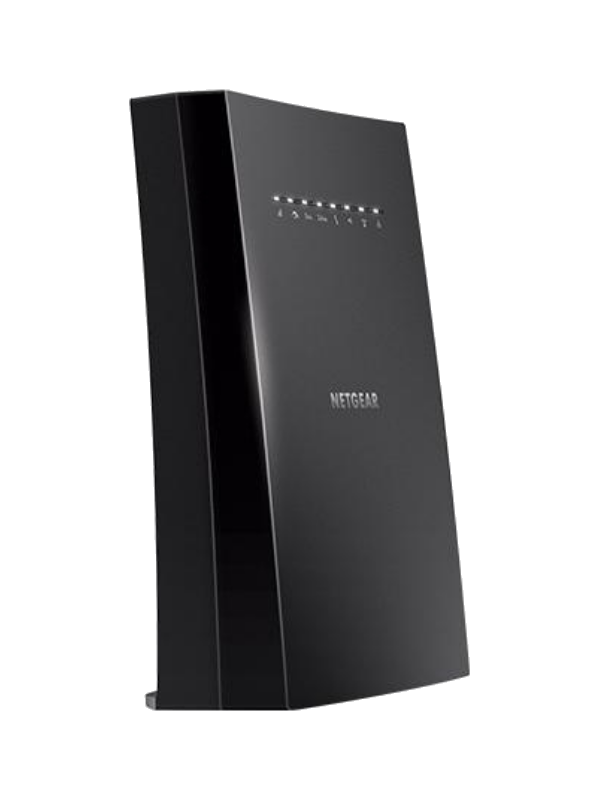
- Coverage: 50 feet
- Max speed (Wi-Fi): 318.21 Mbps
- Separate networks: No
- Recommended for: Internet plans with 1,000 Mbps or lower
- Wireless standard: Wi-Fi 5
- Warranty: 1-year
Pros
- Good range
- Fast speed
- 4 Ethernet ports
Cons
- Some setup delays
If you’re searching for a Wi-Fi extender with Ethernet ports, the Netgear X6S EX8000 AC3000 is our top pick. It has a fantastic combination of range, speed, and price.
The X6S connected to the router with an Ethernet cable produced speeds of 628.21 Mbps at 5 feet. It also has four Ethernet ports that you may use to link printers, gaming consoles, PCs, and other devices straight to your network for even faster speeds and lower latency.
Most Wi-Fi extenders only have one Ethernet connection.
Although this isn’t the quickest extender we’ve seen, it is fast enough to download large files of around 130 GB in about a half-hour on Wi-Fi.
The 5 GHz band on Wi-Fi delivered speeds of:
- 318.21 Mbps at 5 feet
- 184.51 Mbps at 15 feet
- 158.51 Mbps from 25 feet
Again, we used an excellent router during the testing – the ASUS RT-AX88U. If you’re using a less powerful or older router, your speeds, range, and performance will vary.
The X6S’s range did well at 50 feet (about average). So, if you place this extender in a central location, it should be able to cover the majority of multi-story homes with Wi-Fi.
We had some difficulties connecting the Netgear X6S EX8000 AC3000 when we initially set it up, but it works well now. It simply took a few tries to connect it with the router.
The Netgear X6S is a tri-band extender, with one 2.4 GHz band and two 5 GHz bands. This widens your bandwidth and allows you to connect many devices (ideal for homes with numerous smart home sensors and smart wireless sensors).
Setting up the Netgear X6S was a bit of a pain, but it’s a decent extender with good range, excellent speed, and four Ethernet connections.
You’ll also appreciate that it has a single network, which works better with laptops, smartphones, tablets, and other gadgets since you won’t have to change networks when moving from room to room in your house.
The X6S’s excellent performance, range, multiple Ethernet connections, and fair price make it our top pick among all Wi-Fi extenders with Ethernet.
Read our full review of the Netgear X6S EX8000 AC3000.
#8 TP-Link RE315 AC1200 – Best for Basic Internet Service
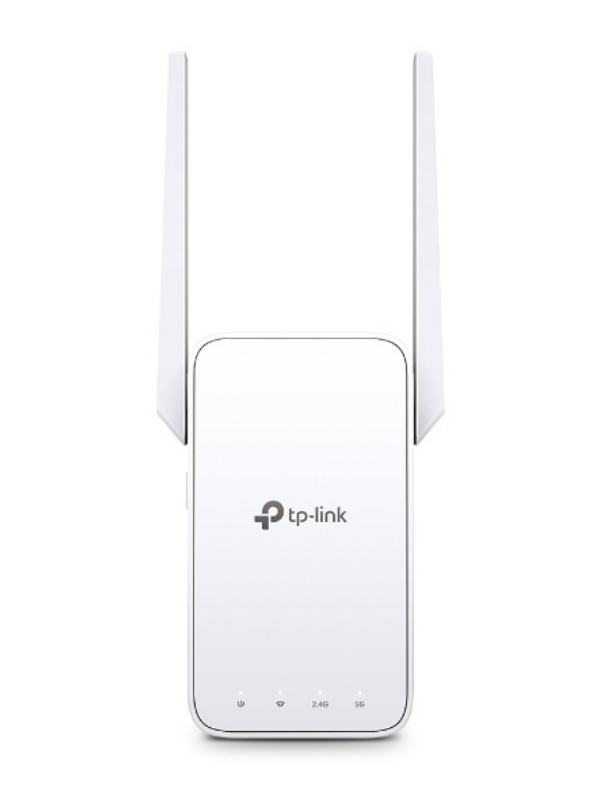
- Coverage: 60 feet
- Max speed (Wi-Fi): 187.61 Mbps
- Separate networks: Yes (unless you use OneMesh)
- Recommended for: 300 Mbps plans or lower
- Wireless standard: Wi-Fi 5
- Warranty: 3 years
Pros
- Easy setup
- Decent range
- Fast enough for entry-level/slower Internet plans
Cons
- Creates a second network
- Not as fast as other extenders
- Only one Ethernet port
The TP-Link RE315 AC1200 is our top pick for basic Internet service. It has excellent speed and range, ideal for people on 300 Mbps or less Internet plans.
The RE315 extended our Wi-Fi signal to 60 feet on Wi-Fi and 70 feet on Ethernet. This is enough to provide Wi-Fi coverage throughout your house, even your attic.
It’s also worth noting that it has the best wireless speed at 5 feet away, hitting speeds of up to 187.61 Mbps on the 5 GHz band (when connected via Wi-Fi). At 15 feet, the speed was 156.21 Mbps.
When we connected the extender directly to our router with an Ethernet connection, download speeds increased to 302.51 Mbps.
These speeds are more than fast enough for the lowest-tier Internet plans, especially those with Internet plans with 300 Mbps or less download speeds.
If you want one network in your home, you will have to use this extender with a TP-Link router with OneMesh or an Ethernet connection. Otherwise, it will create a second network.
In that case, you’ll need to change networks every time you go somewhere in your house.
The TP-Link RE315 AC1200 is also simple to set up. We installed it in only a few minutes using the TP-Link Tether mobile application.
Overall, the TP-Link RE315 AC1200 is a fantastic budget-friendly option for Internet plans with lower download speeds. It’s one of the more affordable Wi-Fi extenders on the market, yet it delivers good performance and long range.
The sole drawback is that you’ll need to set up a secondary network if you don’t utilize OneMesh or an Ethernet connection.
Read our full review of the TP-Link RE315 AC1200.
#9 TP-Link RE220 AC750 – Best Budget
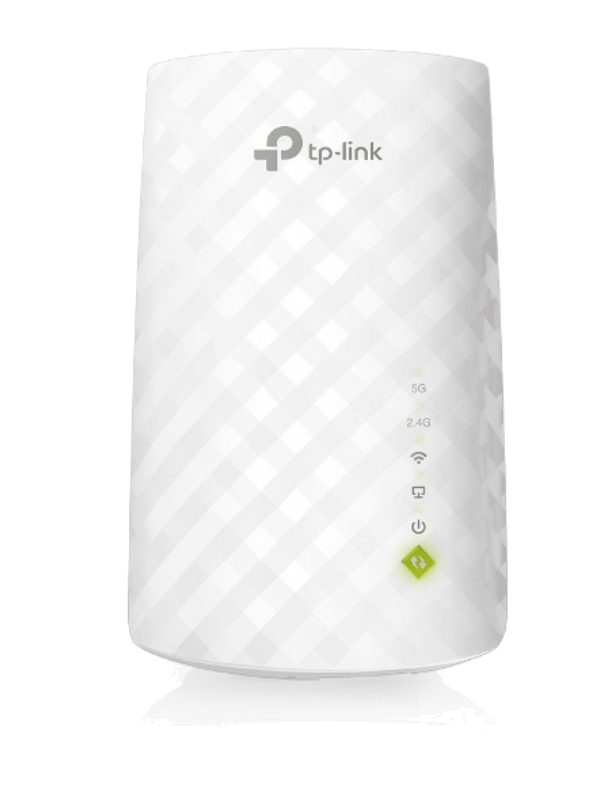
- Coverage: 60 feet
- Max speed (Wi-Fi): 153.94 Mbps
- Separate networks: Yes, unless using OneMesh with a TP-link router
- Recommended for: People on a budget
- Wireless standard: Wi-Fi 5
- Warranty: 3 years
Pros
- Easy to setup
- Low-cost
- Decent range
Cons
- Slower speeds
- Secondary network (unless you have OneMesh)
The TP-Link RE220 AC750 is our choice of extender for tight budgets. It is the lowest-cost Wi-Fi extender on this list. Yet, it provides a decent range and coverage.
The TP-Link RE220 clocked in at 153.94 Mbps at 5 feet, 134.45 Mbps at 15 feet, and 123.41 Mbps at 25 feet, all on 5 GHz Wi-Fi.
On Ethernet, the speeds increased at 5 feet, but nothing significant. On 5 GHz, it reached:
- 221.05 Mbps at 5 feet
- 119.13 Mbps at 15 feet
- 81.2 Mbps at 25 feet
Oddly, at 15 and 25 feet away from the router, the RE220 speed was slower on Ethernet than with a Wi-Fi connection. Not typical, and something to keep in mind if you get this extender.
So, (with this extender only) we recommend using Ethernet if you are near the router and Wi-Fi if you are far away.
These speeds are not impressive by any means. But, if you have a slow ISP providing speeds of 200 Mbps, then this extender is adequate and will get the job done.
It’s fast enough for online homework, browsing YouTube videos, and some light online gaming.
This extender (like most TP-Link models) was super simple to set up. Just download the app, follow the instructions, and you’re good to go in a matter of minutes.
While the setup is easy, it does make a second network unless you own a TP-Link router with OneMesh or connect it with Wi-Fi. Secondary networks can be a pain if you move around your home often with wireless devices.
If you’re in a budget bind and desperately need Wi-Fi in another part of your home or dorm (to complete your homework), the TP-Link RE220 extender is a good choice. It has decent speeds and range, along with an easy setup.
Read our full review of the TP-Link RE220 AC750.
Do you need a Wi-Fi Extender?
If you’re having any of the following difficulties, you may need a Wi-Fi extender:
- Wi-Fi dead zones in your home
- Slow internet speeds
- Poor Wi-Fi signal strength
- Lagging while streaming content or gaming online
It’s always worth considering a Wi-Fi extender if your internet connection is sluggish. However, you may be able to resolve your slow Wi-Fi problem in a different manner.
For example, you might need to upgrade your modem or router. If they are more than five years old, we recommend replacing them.
If you’re thinking about upgrading your modem or router, take a look at our selections for the best modems and routers.
Another alternative is simply repositioning your router to a central location or moving it to another room, which may be helpful too.
Alternatively, let’s say you reside in a large home with numerous Wi-Fi dead zones and use a lot of smart home sensors. In that scenario, a Mesh network may be the best option.
Wi-Fi Extender Buying Guide
Here are the most important factors to consider while purchasing a Wi-Fi booster for your home internet. For a more general guide, check out our extender buying guide.
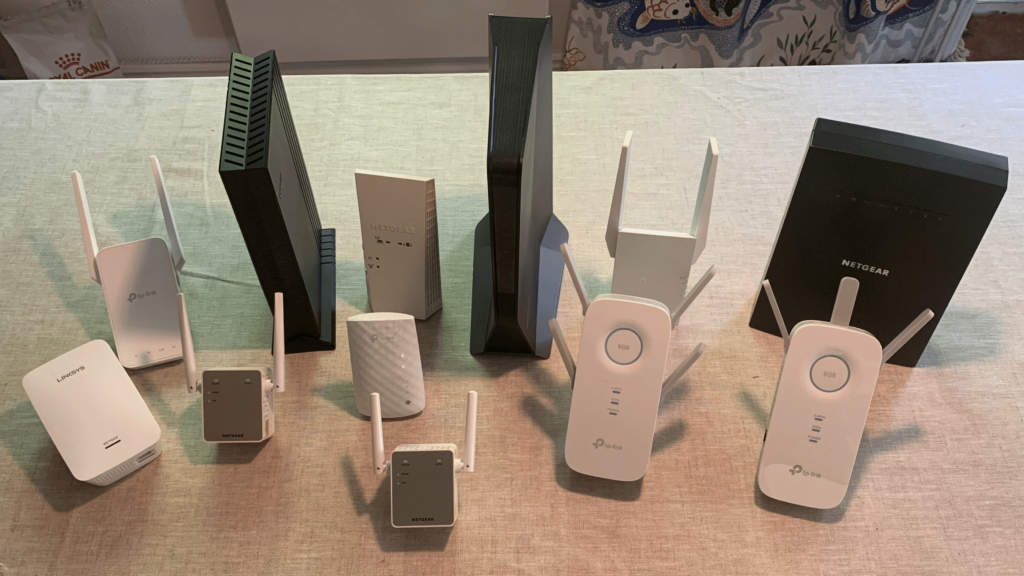
Match the Brand
We recommend using the same manufacturer of WiFi extenders as your router.
A single network can be created by linking routers and extenders from the same manufacturer (for example, OneMesh with TP-Link). As a result, the installation is more straightforward, and you will have the best performance and the least latency.
Some manufacturers of routers, however, do not produce extenders. If you have an Arris router, for example, you won’t be able to connect an extender to it because Arris doesn’t make any.
Wi-Fi 5 vs. Wi-Fi 6
Wi-Fi 5 and Wi-Fi 6 are the most popular wireless networking technologies today.
Wi-Fi 5, also known as 802.11ac, has less latency and supports more devices simultaneously than the previous standard (Wi-Fi 4), which is referred to as 802.11n.
Wi-Fi 6, on the other hand, is several times faster than Wi-Fi 5 and is ideal for gamers and virtual meeting workers looking for low latency.
If you want to get the most out of your Wi-Fi network, we recommend using a Wi-Fi 6 extender rather than a Wi-Fi 5 one.
We still recommend Wi-Fi 6 extenders with Wi-Fi 5 routers because it is backward compatible and will future-proof your network.
Wi-Fi 5 extenders, on the other hand, will still provide excellent performance and can save you money upfront.
There’s more difference between Wi-Fi 5 and Wi-Fi 6. Our comparison guide looks at some of the key differences between these two generations.
What if my Router is Wi-Fi 4?
If you have a Wi-Fi 4 router, replace it with a new one rather than an extender.
Upgrade your router if you have long load times, sluggish performance, or are frequently bounced off of servers no matter how close you are to it.
If you upgrade from a Wi-Fi 4 router, your Wi-Fi difficulties are likely to go away, and you’ll be able to get Wi-Fi coverage in more of your home. To check if your router is Wi-Fi 4, look for “802.11n” on your network’s label.
For some great router options, read our best router recommendations here.
Dual-band vs. Tri-band
Dual-band Wi-Fi extenders have both a 2.4 GHz and 5 GHz band and are more popular and less costly. However, they have less bandwidth.
On the flip side, tri-band Wi-Fi extenders operate on both 2.4 GHz and 5 GHz frequencies too. But they also have an extra 5 GHz band (useful for Wi-Fi 6).
Tri-band Wi-Fi extenders are more expensive, but if you have Wi-Fi 6, have a large number of network devices, or just want the extra bandwidth, we recommend getting one.
However, if your router is dual-band, consider saving money by purchasing a dual-band Wi-Fi extender. However, a tri-band extender will function with a dual-band router and vice versa.
Check out our article on dual-band vs. tri-band for more info.
Coverage
On the product web page or label of each Wi-Fi booster, its range is typically displayed.
The majority, however, aren’t accurate. Some are too high, while many are too low.
The extenders we looked at covered between 70 and 120 percent of their claimed range. So, we recommend purchasing a Wi-Fi extender with at least a 30 percent greater range than the distance you need to ensure that your Wi-Fi reaches your dead zones.
A router’s strength, especially if it is a wireless one, dramatically influences the range of your extender. If you have a better and faster router, your extender might be able to reach further.
You should be concerned about how far or near the extender is from your router. Both of these aspects result in reduced speeds and less coverage at greater distances.
Connected to the Router Using Ethernet or Wi-Fi
Choosing how your new extender will connect to your router is one of the first things you’ll want to consider.
You may either link it up via Ethernet or using Wi-Fi.
We recommend connecting your extender to your network with an Ethernet cable if you have the option. This will result in the smoothest, fastest, and most dependable connection.
Finally, this extra bandwidth over Ethernet can help avoid buffering and lag by allowing you to stream more 4K videos or play games.
But it’s not always simple to connect your extender to your router with an Ethernet cable. Don’t worry if this is the case. You can still utilize Wi-Fi to link the two devices.
The main disadvantage of Wi-Fi is that you’ll need to connect the extender to the router.
It’s not a significant issue for most people (especially on slower internet plans), but it’s something to consider.
So, what mode is best?
If you already have Ethernet hookups where you want to put your Wi-Fi extender, go with Ethernet. If not, use Wi-Fi.
Remember that if you connect the two devices using Wi-Fi, your extender’s speeds will be slower than those connected via Ethernet.
Also, if your internet plan is fast (greater than 1,000 Mbps), an Ethernet connection to your extender will help you fully utilize its speed.
Mesh Wi-Fi vs. Wi-Fi Extender/Repeater
If you’re looking for a new Wi-Fi solution for your house, you might be wondering if a mesh Wi-Fi system or a Wi-Fi extender is the best option.
A mesh Wi-Fi system is a group of several devices that work simultaneously to form one large wireless network throughout your property.
They’re ideal for people who have a lot of wireless devices or live in larger homes.
On the other hand, a Wi-Fi extender is a single device that boosts the signal from a single point.
This is ideal for people who have average homes with only a few devices that need to be connected to the internet.
We recommend using a mesh network to get the most out of its speed if you have a fast internet plan (1,000 Mbps or faster) with several devices and a big floorplan.
Wi-Fi extenders, on the other hand, might be helpful in large houses too. For example, if you only have one Wi-Fi dead zone in your home. They’re also more suited to slower Internet plans.
If you’re still unsure which one is best for you, read our comparison of mesh Wi-Fi systems versus traditional Wi-Fi.
How to Set Up an Extender
Now that you know all about Wi-Fi extenders, let’s walk through how to set one up.
The process is pretty simple and only takes a few minutes. Just follow the steps below:
- Choose the right location: You’ll want to place your extender halfway between your router and the dead zone in your home.
- Connect the extender to your router: Use an Ethernet cable to connect your extender to your router. If you can’t use an Ethernet connection, you can connect wirelessly via Wi-Fi.
- Plug in the extender: Once connected to your router, plug in the extender and wait for it to power on.
- Configure the extender: Follow the instructions that come with your extender to configure it for your home network. This usually involves logging into a web interface and entering your network name (SSID) and password. Or, you can download the extender’s app on your phone and follow its instructions.
- Test the connection: Once everything is configured, test the connection by connecting a device (like a laptop or smartphone) to the extender’s network and see if you can access the internet.
And that’s it! You should now have a working Wi-Fi extender in your home. If you’re still having trouble, check out our guide on troubleshooting a Wi-Fi extender.
FAQs
Here are the most frequent questions we get about Wi-Fi boosters.
Does A Wi-Fi Extender Slow Down Internet Speed?
No, Wi-Fi extenders do not affect internet speed.
However, some bandwidth is lost when the internet goes through a secondary device, such as an extender. Meaning your extender will never have the same download and upload speeds as your router (it is always less).
The actual download speed varies depending on your home, ISP, router, and the number of other people using that connection simultaneously.
What is the best Wi-Fi Extender?
The TP-Link RE605X AX1800 is the best Wi-Fi Extender. It provides an excellent connection and has a great range and speed.
Where should I install the Wi-Fi extender?
You should put your Wi-Fi extender about halfway between your router and your Wi-Fi dead zone.
Let’s say your router is in your front den on the first floor, and you get a poor Wi-Fi signal in your upstairs back bedroom. In this case, installing the Wi-Fi booster at the top or bottom of your staircase might be your best choice.
This can help you get the fastest possible speeds and minimize the dead zones in your house.
Keep the extender away from other electronic devices since they may generate interference that can harm performance.
How do I tell if my Wi-Fi extender is working?
If you suspect your Wi-Fi extender is not functioning, the quickest way to check is to use your smartphone to connect to the network in various areas of your house.
If you have a Wi-Fi signal where there wasn’t before you had the extender, then it is more than likely working.
If you have no Wi-Fi signal (or a weak signal), your extender could be having problems. Suppose you have a Wi-Fi extender that makes a second network. In that case, check to see if the second network is still active.
If you’re still having trouble, you can call or chat with the extender manufacturer’s tech support.
What Ethernet cable should I use with my Wi-Fi extender?
We highly recommend a Cat 6 Ethernet cable. Cat 6 cables are higher quality, more dependable, and have faster Wi-Fi speeds. On the flip side, you can also use a Cat 5e cable– it will be less expensive but slower.
Check out our guide on Cat 5e and Cat 6 for additional details.
The Final Verdict
We found that the TP-Link RE605X AX1800 is the best Wi-Fi extender after extensive testing and consideration.
It’s an easy-to-use, fast Wi-Fi extender with a long range that works on the same network as your router (if you connect to a TP-Link router with One Mesh or connect to it with Ethernet). And it is affordable considering the performance it delivers.
But, it is a little harder to set up than other models, creates a second network (if you use Wi-Fi without One Mesh), and isn’t the cheapest one on this list.
